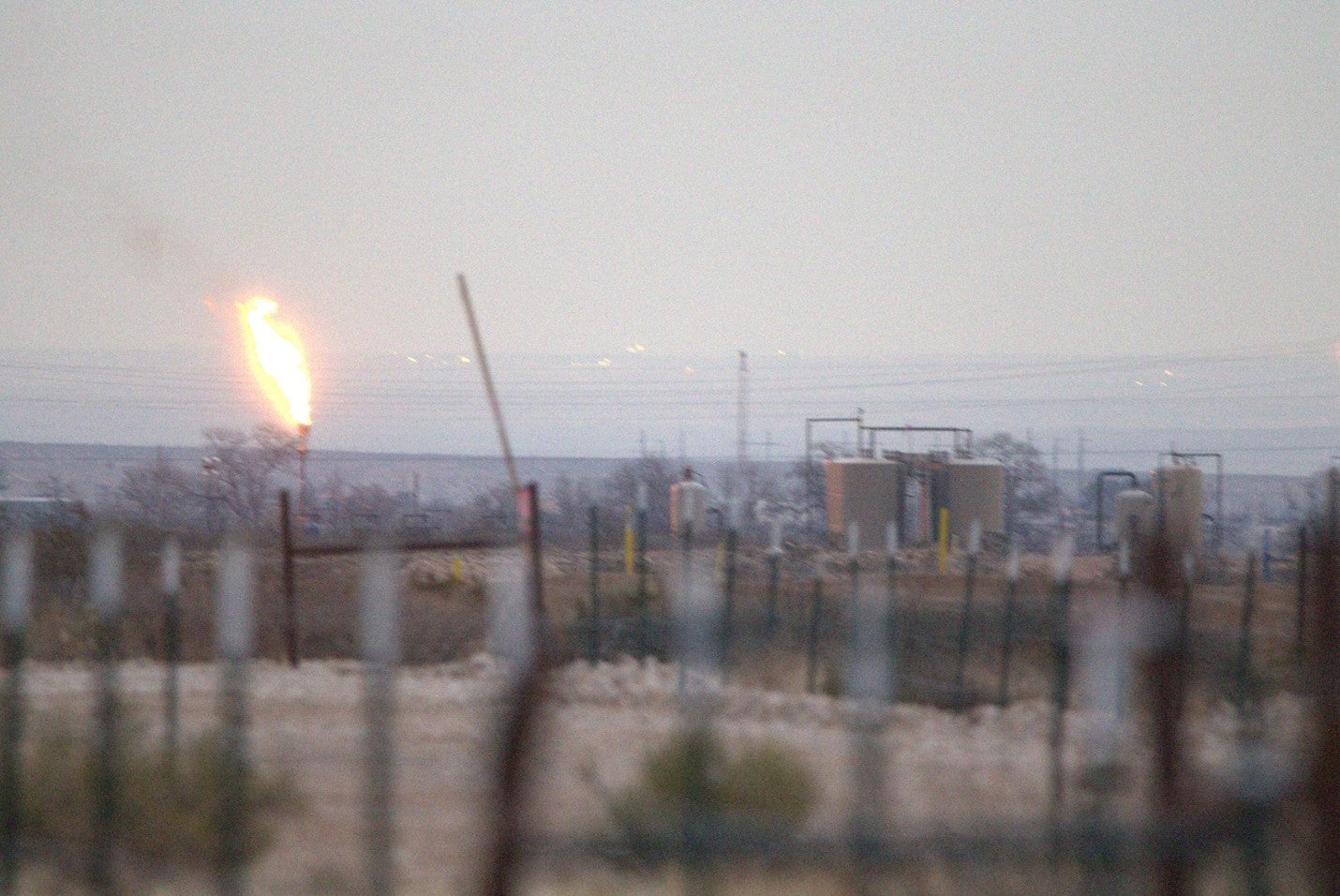New Thinking Is Critical To Better Manage Water And Electricity Resources In Texas
Central Texas Workshop Discusses Opportunities For Resiliency During Extreme Weather Events
This commentary was originally posted on our Texas Clean Air Matters blog.
 Last week, I attended a regional workshop that focused on adapting to extreme events, sponsored by the U.S. Environmental Protection Agency (EPA), the National Oceanic and Atmospheric Administration, the Water Environment Research Foundation, the Water Research Foundation, Concurrent Technologies Corporation, and Nobilis. This workshop was the sixth in a series organized around the country to determine what is needed to increase the resilience of water utilities and communities in the face of extreme weather events. While the focus was on water, time and again, electricity was brought into the conversation—the two are closely linked, and in Texas, a state facing shortages of both water and power, this will require some creative thinking on our part.
Last week, I attended a regional workshop that focused on adapting to extreme events, sponsored by the U.S. Environmental Protection Agency (EPA), the National Oceanic and Atmospheric Administration, the Water Environment Research Foundation, the Water Research Foundation, Concurrent Technologies Corporation, and Nobilis. This workshop was the sixth in a series organized around the country to determine what is needed to increase the resilience of water utilities and communities in the face of extreme weather events. While the focus was on water, time and again, electricity was brought into the conversation—the two are closely linked, and in Texas, a state facing shortages of both water and power, this will require some creative thinking on our part.
This workshop focused on Central Texas, in particular our drought. But as the two-day workshop went on, it became clear to the organizers when local water utilities and other stakeholders spoke, that drought was only one extreme event that Texas has had to deal with…and continues to deal with. We are a state of extremes—weather, politics, personalities—and we not only have drought to handle, but also hurricanes, floods, tornadoes, wildfires, and just generally scorching heat. One of the first speakers was John Nielson-Gammon, the State Climatologist based out of Texas A&M University. He confirmed that while these natural phenomena are not new to Texas, we are experiencing more intense weather events. Last year was one of the hottest in Texas since we started recording temperatures, and we are heading into the third year of a pretty gruesome drought. Not being prepared for extreme events to get worse seems pretty foolhardy.
During the workshop, we heard from a variety of speakers from around the Central Texas region, including from the Barton Springs/Edwards Aquifer Conservation District, the Lower Colorado River Authority, rice growers, the University of Texas, the high tech industry, and individuals from Austin, San Antonio, and Bastrop. These people are dealing first hand with the impacts of the extreme events we’ve had in the past few years. They are simultaneously trying to manage the current situation while planning for what the changing climate means in the coming years. It’s a difficult balancing act.
As an outsider to the planning process, I was asked to report on the proceedings of a meeting at the end and to give an overview of my impressions of the workshop. My impressions were as follows:
It is crucial to balance short-term preparedness with long-term resiliency, and neither should be sacrificed at the expense of the other. Planners in Central Texas know how to handle floods, fires, and drought, but the intensity of these natural phenomena will likely increase with the effects of climate change. It’s also essential to ensure that we are protecting our water and electricity needs for the long-term.
There is tension between urban and rural needs. This is not a new concept, and it is particularly tense with regards to water needs. Often the decisions about water and electric needs are made in cities, and city dwellers may think of rural needs only in the abstract. But protecting the quantity of water available for farmers and ranchers is how we feed our urban populations. Some cities in Central Texas are, out of necessity, dealing with this issue. In the wake of the wildfires in Bastrop, planners in that area are taking a closer look at how homes are constructed and how the urban/rural interface affects the ability to provide water for its population and prevent future wildfires. Controlled burns are one way that wildfires are prevented, but you can’t do controlled burns in a subdivision built into a forest. Thinking about developing our communities in more thoughtful ways is critical.
Adapting to our changing climate necessarily includes water, but it also goes beyond water. Emergency preparedness must include ensuring adequate water supplies and electricity. We can envision extreme events in Austin because we’ve had them in the past: fatal flooding, tornadoes, wildfires, drought, and heat waves. These extreme events will likely intensify as climate change advances, and we need to be comprehensive in our planning. We know that we’re facing potential electricity shortages within the next three years, and water supplies are already stressed. We also have to take into consideration whether our current infrastructure can maintain our growing population, especially in the face of future extreme events, and what those events mean in terms of health impacts. Many evacuees from Hurricanes Katrina, Rita and Ike were dehydrated and fell sick, and healthcare workers across the state responded heroically. We should anticipate more vulnerable populations in the wake of extreme events in the future.
Finally, it’s not all doom and gloom. The good news is a lot of people are already thinking about this, but there is still much work to be done. Some tools and methods that should be considered are:
- Collaboration. This seems like a no-brainer, but while in the thick of an emergency, people pull together, and in long-term planning, this should be part of the process and not an afterthought. We need hands-on help from those who have been through extreme events or have expertise to offer.
- Economic incentives for people to conserve water and electricity. What about something akin to a non-attainment zone for water? I’m not suggesting that EPA impose restrictions, but it should be made clear to chambers of commerce that it is in their best interest to promote and encourage water and energy conservation and efficiency because no business will want to be located in a region lacking available water and electricity. They will set up shop in states that are managing their supplies.
- Creativity in accessing financial resources. Governments are strapped for money, so we shouldn’t expect them to pay for all the conservation and efficiency. So, how do we pay for it? We get creative and consider alternative financing to help people invest in their own efficiency, such as on-bill repayment (OBR).
- Communicate the problem and the solutions more effectively. The messages about conservation and efficiency are often too academic to be practical for your typical user. We need to find the balance between data-driven academic speak and practical, useful information. And we need the right messengers to get the word out.
- Top down and bottom up approaches. Just like the U.S. Department of Defense has put out directives on increased energy efficiency and use of renewable energy, the actual work of putting that into practice has to be done at the ground level. What works at Fort Bliss in El Paso is not necessarily what works at Fort Benning in Georgia. The same concept applies to the rest of us. Having leadership that encourages and promotes energy and water efficiency and conservation is critical, but we need creative solutions at the ground level to see them through, and there will necessarily be regional and local variations.
- Behavior change. We need to change how we think about using water and electricity, at the customer and utility levels. Users of water and electricity in Texas need to appreciate the fact that supplies are constrained and determine how to do the same with less. The answer to that is efficiency—water and energy audits, upgrading properties to be more efficient, understanding how and when we use water and electricity (through the use of smart meters or other smart technologies). Utilities need to be incentivized to sell less electricity or water—they need new business models that let them make money, such as what Austin Energy is doing with Pecan Street Inc. or decoupling, which removes the link between electricity sales and utility profits. Whatever the solution, creative thinking and bold decisions are necessary—and warranted.
Preparing for extreme events is the smart thing to do, but it’s also necessary. Jurisdictions throughout Texas have had to learn the hard way that planning is essential, but there are valuable lessons applicable to how we think about our water and electric resources. As the changing climate continues to throw extreme weather events in our path, we need to make intelligent decisions about how to plan and respond in a way that establishes Texas as a leader.












